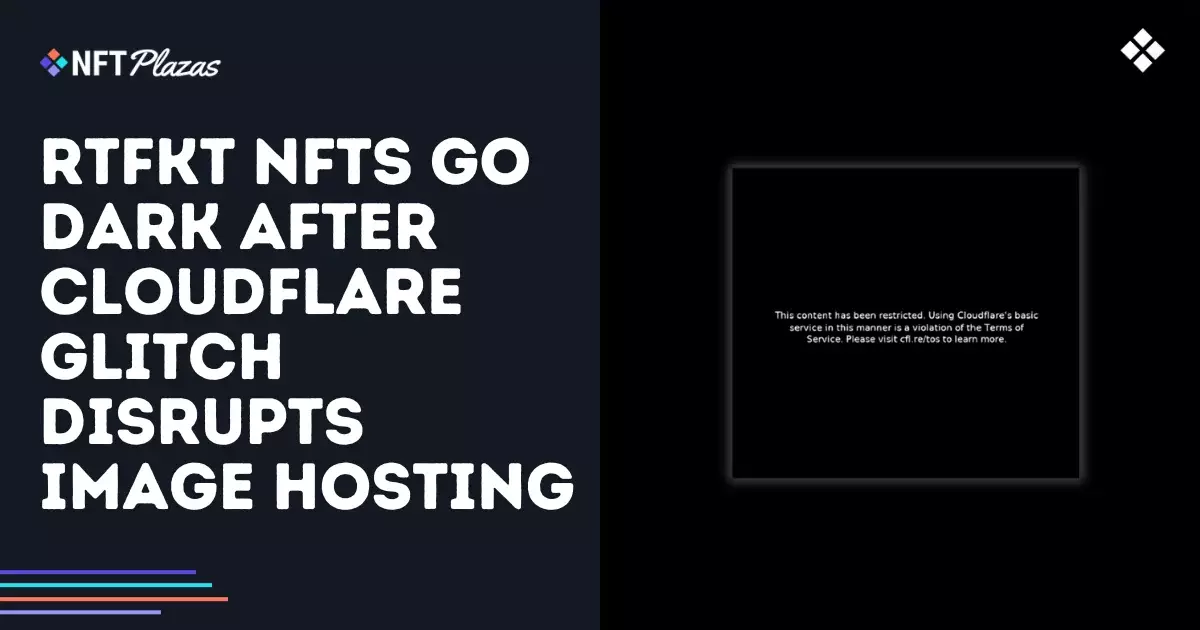Non-Fungible Tokens (NFTs) have captured the imagination of collectors and investors alike, emerging as a revolutionary concept in the digital age. However, the recent incident involving RTFKT’s Clone X and Animus collections serves as a stark reminder of just how precarious this blockchain-based dream really is. On April 24, 2024, crisis struck when images linked to these popular NFT collections vanished, leaving collectors facing an unsettling black screen instead of their digital assets. This calamity underscores the inherent fragility of NFTs in a world that often conflates ownership with access—a misconception that could lead many to financial ruin.
The Illusion of Ownership
At the heart of the NFT phenomenon lies a troubling paradox: while ownership of the tokens and their associated metadata is secured on the blockchain, the visual representations of these collectibles often depend on third-party hosting solutions. In this case, RTFKT’s assets became inaccessible due to an unexpected downgrade from Cloudflare, the very service that was supposed to provide reliable hosting for these digital files. Collectors were brutally reminded that their “ownership” hinged not on the immutable blockchain but rather on an external service that can falter at any time. This disconnection between ownership and access is a ticking time bomb for NFT enthusiasts, revealing a systemic flaw in the model that promises permanence but frequently delivers insecurity.
A Centralized Conundrum
In a world that champions decentralization, trusting a centralized entity like Cloudflare creates a significant vulnerability. The incident highlights a critical point of failure in a space often hailed for its democracy and permanence. Samuel Cardillo, the former Head of Technology at RTFKT, has acknowledged this shortcoming and is now leading an initiative to migrate assets to Arweave, a decentralized storage solution. This transition is aimed at creating a robust framework for preserving NFTs against the whims of centralized services, yet it poses the question: why were we so willing to rely on traditional hosting methods in the first place?
Costs and Consequences
The move to secure Arweave storage will cost RTFKT approximately $2,800, a small price to pay for reliability in the grander scheme of NFT economics. This expense reveals another unsettling truth: the ongoing burden of maintaining digital assets in the perpetually evolving landscape of technology. As NFT creators and collectors continually scramble to safeguard their holdings, the specter of hidden costs looms over the market. This is not just a supplementary expense; it becomes a crucial element of the investment strategy for anyone looking to dive deeply into the NFT space.
Can We Rely on the Future?
What does this incident tell us about the long-term prospects of NFTs? While NFT culture is undeniably fascinating and holds potential for growth, it is equally important to acknowledge the dangers lurking behind the scenes. The episode with RTFKT should serve as a wake-up call, compelling collectors to rethink their strategies and reinforce their understanding of what true ownership means in a digital environment. Without a paradigm shift towards more secure, permanent storage solutions, the future of NFTs may remain as hazy as the black screens many collectors now face.

